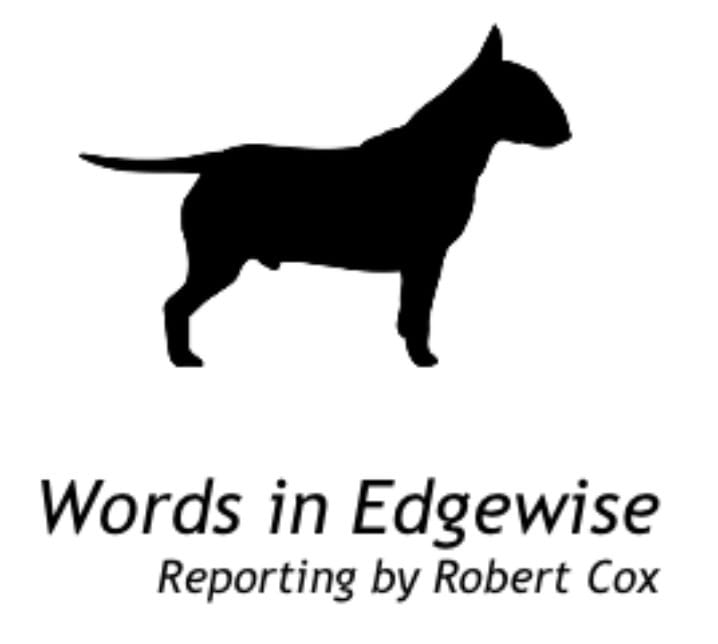Butcher’s Bill Comes Due for New Rochelle Democrats

How Yadira & Co. eviscerated New Rochelle’s finances in less than 18 months.
NEW ROCHELLE, NY (September 7, 2025) — On the afternoon of Tuesday, September 9, the public will learn what happens when you combine low-IQ spend-thrift politicians, blatant corruption, and an utterly incompetent chief executive, making the next city council meeting a MUST WATCH train wreck.
Finance Commissioner Ed Ritter, who recently announced his retirement later this year, will disclose the single largest decline in undesignated fund balance in the history of New Rochelle.
Scandal does not even begin to cover it. More like dereliction of duty across the board.
The first item up on the New Rochelle City Council Agenda for their Committee of the Whole Meeting on Tuesday at 3:45 pm is the much-delayed independent auditor’s report which will reveal a massive hole in the Undesignated Fund Balance.

The current council led by Mayor Yadira Ramos was elected in November 2023, and took office on January 1, 2024. The day before Ramos took office, on December 31, 2023, the city auditors reported the undesignated fund balance stood at $24,467,799. Due to reckless, profligate spending demanded by council Democrats, and a complete abdication of oversight by City Manager Wilfredo Melendez, that figure now stands at about $9 million, down more than $15 million since Yadira & Co. took office, a decline of more than 63% in just a year and a half.
As word has spread of the financial calamity facing the municipal government, the knives are already out at City Hall.
How Did the Fund Balance Suddenly Implode?
Although delayed in recent years, historically, a preliminary audit is done by independent auditors in December with a final audit completed by June. New Rochelle, like all municipalities, files Annual Financial Reports with the New York State Office of the State Comptroller. The books are closed so the city staff can begin work on the following year’s budget. As work begins on the 2026 budget, the 2024 Annual Financial Report has yet to be filed with the Comptroller.
EFPR Group, the current independent auditors for the City of New Rochelle, have been unable to complete the current, ongoing audit due to the unanticipated need to make millions of dollars in adjustments, multiple sources say. Funds were taken from various unrelated line items and allocated to a myriad of profligate spending items. The line items were backfilled using the undesignated fund balance.
The primary actor in this has been Development Commissioner Adam Salgado, sources say. He, and others, drained the undesignated fund balance in the mistaken belief that money from development projects such as Pratt Landing and BRP could be used to replenish the fund balance before the auditors noticed. When those funds failed to materialize, and the auditors showed up, it was too late, the depletion of undesignated fund balance was laid bare to auditors, and on Tuesday, the public will be told.

The sudden and unexpected drop in New Rochelle’s undesignated fund balance from $25.4 million to $9 million in just 18 months raises serious concerns about fiscal management. What amounts to a municipal Ponzi scheme raises grave questions about compliance with the City Charter and state laws governing public finances.
The City of New Rochelle has a strict policy on managing its undesignated fund balance, aiming to keep the General Fund at approximately 10% of operating costs as a financial buffer. Transfers from the fund balance are permitted only for legitimate, approved expenses or projects, requiring three signatures to transfer funds out of fund balance: the relevant department commissioner, the finance commissioner, and the city manager but only after a unanimous City Council authorization vote to ensure accountability and prevent dipping into the fund for casual withdrawals.
These guidelines are enshrined in the City Charter under Article XII: General Financial Provisions, which mandates prior appropriations for expenditures, and unanimous Council approval for inter-account transfers (except from the contingent fund).
If there were unauthorized reallocations, where funds were diverted from various budget line items to cover a range of spending initiatives and then later replenished from the undesignated fund balance, such practices, if substantiated, could constitute official misconduct under New York Penal Law § 195.00, involving a public servant’s intentional performance of unauthorized acts to obtain or deprive benefits, or misappropriation of public funds in violation of General Municipal Law provisions on ethical financial management.
Additionally, if these adjustments involved falsifying records to conceal the transfers, they might rise to falsifying business records under Penal Law § 175.05, potentially escalating to a felony if done with intent to defraud. While profligate spending alone may merely reflect poor fiscal oversight, any scheme to defraud the government through misleading representations could trigger charges under Penal Law § 195.20, exposing New Rochelle officials to investigations by the state Attorney General or local authorities.
The situation underscores the purpose of my ongoing scrutiny of municipal budgeting practices in New Rochelle, my broader calls for transparency in public spending and access to public records, and retaliatory actions against me by City officials including obstructing my lawful FOIL requests and the unprecedented council-authorized funding of a federal lawsuit against me with taxpayer dollars.
This depletion was hidden from public view due to internal decisions not to obtain unanimous council approval for fund balance transfers, delayed and incomplete audits, and choosing not to manage short-term cash flow with traditional borrowing instruments like Tax Anticipation Notes or Revenue Anticipation Notes, which also require public city council votes.
Using fund balance for temporary cash flow issues violates best practices outlined by the Government Finance Officers Association and New York State Comptroller, risking reserve depletion, potential credit rating downgrades, and masking structural budget issues.
Sources within the administration say many staffers raised concerns about these financial irregularities in the handling of municipal funds since last year but were ignored.
Draining the Undesignated Fund Balance


What can be seen from the past decade of Annual Financial Report filings is years of patient, assiduous effort by city officials and Democrats and Republicans on council to rebuild the fund balance (called “designated reserve” at the time) which had dropped dangerously low, to about $500,000 in the wake of the 2008 Financial Crisis. Yadira & Co. have wiped out the bulk of the city’s “rainy day fund” in a matter of months.



New York State GASB Statement No. 54 classifications were changed in 2011. Pre-2011 data uses older categories like “reserved” and “unreserved,” so unassigned figures are blank or omitted in current reports. This is due to GAAP updates by GASB, not a legal change. So, for continuity, I limited the analysis back to 2011.
Perhaps now skeptics will begin to understand why I have been reporting on wasteful spending under the Ramos/Melendez administration, why there is an ongoing, multiagency criminal investigation led by the Westchester County District Attorney’s Office, why Melendez and Corporation Counsel Dawn Warren have been stonewalling my public records request for more than a year, why Melendez recommended council approve funding an unlimited budget to investigate me and sue me on entirely bogus defamation claims and why Warren and Salgado recently filed a frivolous federal lawsuit against me.
Now readers will begin to understand why Kathleen Gill had to go. They knew she would say “no” to out of control, often illegal, often ludicrous, spending proposals by councilmembers— millions on marketing and public relations consultants, millions for pet projects of individual members, millions in no-bid contracts, and truly crazy ideas like turning David’s Island into a large-scale affordable housing complex with a bridge to the mainland dumping traffic into the Hudson Park parking lot or replacing trees on city property with fruit trees so homeless people could pick the fruit and eat it whenever they were hungry (if you guessed those last two were the brainchild of Shane Osinloye, you win a cookie).

At her second RLM meeting as Mayor, Ramos proposed to raid the fund balance of $250,000 to renovate her office. Gill pushed back (along with lone Republican councilmember Al Tarantino). Because Gill would not agree to use a reserve fund so Yadira could take a dump on a Golden Toilet, the Democrats turned on Gill with fabricated allegations about renovations of the City Manager’s Office.
The animating event of Yadira & Co. “firing” Gill on March 25, 2024, was the imminent release of an already agreed upon report from the New Rochelle Board of Ethics sustaining my allegation of an ethics violation against Ramos which, while bad for her, had catastrophic implications for Noam Bramson and Sustainable Westchester. But make no mistake, Gill was the barrier between good government and the New Rochelle edition of Councilmembers Gone Wild. She had to go. And once she was gone the stone walls went up and the floodgates opened, enabled by a feckless City Manager willing to sign any and every contract and write every check Yadira & Co. demanded.
That is how they blew through $15 million in fund balance in 18 months. But things on the express train to insolvency were just getting started. There is more — much more.
2026 Budget Cuts and Layoffs
Department Commissioners have been directed by Ritter to make 5% across the board budget reductions for 2026. The current adopted budget for the City of New Rochelle for fiscal year 2025 is $276.5 million. A 5% cut to this budget would amount to $13.8 million in cuts which are expected to result in layoffs. This while Yadira & Co. have been on a hiring binge, including tripling the size of the Communications Department — along with millions spent on consultants— to generate an endless stream of social media postings and media appearances to promote what amounts to a permanent political campaign for Yadira. To what end is unclear because she has told her party leadership she will not run again for Mayor, and might not even serve her full-term.
Maxing Out Municipal Debt Capacity
The City of New Rochelle credit rating by Moody’s Ratings is Aa2, a high-quality investment-grade rating. The total debt capacity of New Rochelle is $178 mm, according to Finance Commissioner Ed Ritter. 25% of the city’s $178 mm debt capacity is $44.5 mm.
Ritter has repeatedly warned that Moody’s Ratings will downgrade the City of New Rochelle — driving up borrowing costs — upon exceeding 25% utilization of the City’s borrowing capacity. He warned back in June that the city’s borrowing capacity utilization jumped from 21.95% to 23.5%, leaving the city at just 150 basis points below the 25% limit — about $10 million.
Ritter has not previously raised similar concerns about the city’s fund balance ratio because he did not know the full extent of the erosion of the fund balance until recently, sources say. That the City’s Finance Commissioner did not know that millions of dollars was missing from the Undesignated Fund Balance is deeply troubling.
Bond capacity utilization and fund balance ratio are two key factors in determining municipal creditworthiness.
How Moody’s Rates Municipalities
Moody’s Ratings uses a structured scorecard methodology to assign or adjust credit ratings for U.S. cities and counties issuing municipal bonds, such as general obligation bonds. The approach combines quantitative metrics with qualitative adjustments to evaluate creditworthiness, reflecting the issuer’s ability to meet financial commitments.
The methodology weighs four broad categories: the economy is weighted at 30% (resident income at 10%, full value per capita at 10%, and economic growth at 10%); financial performance is weighted at 30% (fund balance ratio at 20% and liquidity ratio at 10%); institutional framework weighted at 10% (meaning governance flexibility, such as the ability to raise revenues or cut expenditures without external constraints); and leverage weighted at 30% (long-term liabilities ratio at 20% and fixed-costs ratio at 10%).
After the scorecard, Moody’s applies notching adjustments up to 4.5 notches or down 6 notches based on unique circumstances, such as strength in local resources, limited scale of operations, financial disclosures, state interactions, and changes in leverage.
Downgrades occur with material deterioration in scorecard factors or notching elements, including weakening economy, deteriorating financial performance, rising leverage, governance challenges, and qualitative issues like poor disclosures or pension risks.
New Rochelle is now facing a potential downgrade, which will raise borrowing costs, and which, if not addressed swiftly, can lead to a vicious circle of cascading financial problems.
IDA Bank Account Zeroed-Out
The New Rochelle Industrial Development Agency (IDA), has no money left, sources say.
The IDA is a local authority under the Public Authorities Accountability Act, so is required to file financial reports with the New York State Authorities Budget Office (ABO). The ABO has the New Rochelle IDA financial reports on its website for 2021, 2022, and 2023 but not 2024 so it is months overdue.
IDA Year-End Balances
Year | Net Position
2020 $651,290
2021 $1,195,007
2022 $704,520
2023 $465,399
2024 $295,349
The table above organizes the year-end net positions by year, using the most recent figures from available financial statements and links to the information source.
The New Rochelle IDA adopted a resolution on March 26, 2025 to file the 2024 New Rochelle IDA financial report with the ABO but that 2024 report is not available on the ABO website or the New Rochelle website so the 2024 “net position” figure is taken from the draft New Rochelle IDA financial report in the March 26, 2025 IDA Agenda Packet.
CLD Bank Account Zeroed-Out
The New Rochelle Corporation for Local Development (CLD), a cousin of the New Rochelle Industrial Development Agency (their boards are identical, their meetings held back-to-back on the same days), has no money left, sources say.
Development Commissioner Adam Salgado, also one of the key figures in the ongoing multiagency criminal investigation led by the Westchester County District Attorney’s Office, effectively controls the CLD.
Under Salgado, the CLD has been on a well-documented reckless spending spree with millions of dollars handed out through illegal no-bid contracts over the past few years to Kingdom Community Consultants (Mark McLean and Josiah Mott), Rocjoyful Productions (Rocky Middleton), Big Viv, Inc. (Vivian Spady) and Feeding the Sound (LaChonne Williams). There are other questionable CLD payments I have sought to investigate such as Arch Communications, but cannot due to stonewalling of my FOIL requests.
The CLD is a local development corporation in New York State. As a local authority under the Public Authorities Accountability Act, it is required to file financial reports with the New York State Authorities Budget Office. The ABO has the New Rochelle CLD financial reports on its website for 2021, 2022, and 2023 but not 2024.
The New Rochelle CLD is on the ABO list of Public Authorities That Have Failed to File Reports in the Public Authorities Reporting Information System for violating Section 2800 of Public Authorities Law. The listing constitutes an official public warning; as of February 25, 2025, the New Rochelle CLD financial report was due on March 31, 2024 and is still past due. The Authorities Budget Office has the power to "publicly warn and censure authorities for non-compliance" with this requirement and to recommend the "suspension or dismissal of officers or directors”.
CLD Year-End Balances
Year | Net Position
2020 $(1,340,825)
2021 $(676,136)
2022 $3,412,054
2023 $1,819,560
2024 $1,152,595
The table above organizes the year-end net positions by year, using the most recent restated figures from available financial statements and links to the information source. Reclassifications and corrections of errors were applied to the 2021 and 2022 balances to conform to the 2023 presentation, as detailed in the 2023 audit report. 2021 was previously reported as $(366,250) in the 2021 financial statements and $(347,988) in the 2022 financial statements. 2022 was previously reported as $1,170,509 in the 2022 financial statements.
Where Have All the Cranes Gone?
The New Rochelle IDA/CLD depend largely on development projects for funding. Setting aside questionable expenses, there is a separate issue of revenue as new construction has slowed to a crawl in the Downtown Overlay Zone. One way to get a quick snapshot of the level of activity is to simply look up. Between 2018 to 2023, tower cranes became ubiquitous across the city skyline. That began to fall off dramatically in 2024. In 2025 not one tower crane has gone up and operated on a building site in the City of New Rochelle. There are still none today. Just look up.
Over the past year there was a derrick up for a weekend at 500 Main Street, there were smaller cranes up briefly for rooftop HVAC replacement and there were small modular pick and carry cranes. There is a mobile crane set up for Stella Phase II at 455 Main Street.
That’s it.
So why is the public told about cranes that do not exist as if any resident cannot look up and see for themselves there are no cranes up above the city skyline?
The Mayor blowing smoke about cranes is one thing (politicians lying is no longer news!) but why is a reporter for The Wall Street Journal lying about cranes?
Mayor Ramos-Herbert Delivers Second State of the City Address (5/8/2025)
In case you haven’t noticed, there’s been a bit of building happening in New Rochelle. Yes—cranes in the sky, scaffolding on the ground, and the steady hum of progress around nearly every corner… Maybe you live in the North End, or along the shoreline, or in one of our historic neighborhoods and feel like the cranes and construction are happening in someone else’s backyard.
Nope.

The Wall Street Journal Podcast: How an NYC Suburb Is Keeping Rents Down (8/20/2025)
Rebecca Picciotto: When you get off the train in New Rochelle, you see construction sites sort of everywhere. You can see kind of the new supply coming on before your very eyes, these empty lots with cranes and the emerging skyline of New Rochelle is very visible.
Not really.
The entire premise of Picciotto’s preposterous article last month, How an NYC Suburb Is Actually Managing to Bring Rents Down, is one I will get into but that is a separate yet related story for another day. Suffice to say, New Rochelle and RXR did not set out to drive down prices on RXR’s product. It’s also not the sort of thing that excites other developers which is why the development pipeline is down to a trickle.
One manifestation of development money moving on from New Rochelle are skyline photos I commissioned, first in January and again last week.








NOTE: Readers are welcome to send along their own “no cranes” skyline photos to robertcox@talkofthesound.com.
Readers in the New Rochelle area can look up and verify the scene remains unchanged — no tower cranes up over New Rochelle.
DOA Projects
Yadira & Co. have emphasized promotion, public relations and marketing over substance. There are three heavily promoted projects (among many) that have received an enormous promotional push but are no longer happening:
- Quaker Ridge Road Upgrade… dead.
- The New Rochelle Transit Center Redesign… dead.
- The LINC… dead.
Quaker Ridge Road Upgrade
In a letter dated August 14, 2025, City Manager Wilfredo Melendez told members of the Quaker Ridge Road Complete Streets Project Committee that the total cost of the project is now currently estimated to be $13,400,000. He then explained how much funding the city had to date. The city initially received $6,034,139 in funding in 2017. The city has $4,424,777 of that money left.The project also received $906,139 of High Priority Project funding. The city council recently approved $1,405,398 from the city budget.
“Unfortunately, in order for construction to proceed we still require a large amount of additional funding,” wrote Melendez.
The shortfall is $7,569,825, more than half the current cost which, as any builder knows, only goes up over time.
He said that to fill the funding gap, the City has been actively pursuing numerous Federal and State grants without success.
“We have been unsuccessful to date given competing demands for transportation infrastructure funding both regionally and nationally,” added Melendez.
He said the City has a pending grant application with the NYS DEC and will apply for funds through the Westchester County Complete Streets Grant Program.
This is a common theme — “we don’t have the money but we are going to apply for grants”. Applying for grants is wishing and hoping not a genuine funding strategy.
The Quaker Ridge Road Upgrade project is DOA but there will be a presentation and hearing on Tuesday anyway.
New Rochelle Transit Center Redesign
Adam Salgado dusted off an old proposal put forward years ago by his predecessor and former mentor, Luiz Aragon, and passed it off as his own idea. Due to a complete absence of institutional memory, Yadira & Co. excitedly embraced this proposal, previously rejected due to the high cost; it is hardly less costly now at an eye-watering $150,000,000, sources say.
The first phase, for the design portion of the transit center, is over $1.5 million.
Like many of these pie-in-the-sky project concepts, the real purpose is more spending on self-promotion by creating the illusion of an accomplishment. New Rochelle is now spending money it does not have on so-called public engagement, surveying people at the train station, creating fantastical architectural renderings, holding press availabilities, hiring a design firm and more.
This bag of tricks is just like the Quaker Ridge Road Upgrade, first announced in 2017 (and driven before that by former Councilmember Shari Rackman): there were press releases, and drawings and committees and public input sessions — and then nothing. The big nothing went on for eight years until I began raising questions (prompted by reader questions) about whatever happened to Quaker Ridge Road.
As to funding the New Rochelle Transit Center Redesign, there have been no specific financial details provided other than the old chestnut, “we are going to apply for grants”.
The New Rochelle Transit Center Redesign project is DOA but the money continues to flow down the Golden Toilet.
The LINC Project
The Lincoln Avenue Innovation Corridor (LINC) project is stone-cold dead yet Yadira & Co. keep talking about it at council meetings, public appearances in the community and to the press.
In 2018, the City of New Rochelle was awarded a $10 million grant from New York State’s Downtown Revitalization Initiative (DRI) to kickstart the LINC project, aimed at “reconnecting” the Lincoln Avenue Corridor area—including portions of Memorial Highway and a former New York, Westchester and Boston Railway right-of-way—to downtown New Rochelle. This funding served as an initial investment rather than covering the full project scope, with no publicly available estimate pinning down the total cost, though sources familiar with the initiative suggest it could exceed $100 million given its ambitious scale.
The $6 million state allocation of the DRI grant received by New Rochelle is said to have dwindled to about $3.2 million without any ground broken on construction. $2.8 million has been expended on public relations, marketing, design consultants, press releases, community input sessions, and community engagement events like jazz-themed (more jazz!) gatherings.
The City has received $15.4 million in non-federal matching funds commitments.
Federal commitments include an $11.96 million grant awarded in 2021 through the U.S. Department of Transportation’s Rebuilding American Infrastructure with Sustainability and Equity (RAISE) program under the Infrastructure Investment and Jobs Act.
The RAISE grant program, administered by the U.S. Department of Transportation (USDOT), operates on a reimbursement basis rather than providing funds upfront or as advances. This means a recipient such as New Rochelle must first incur eligible costs and enter into obligations for LINC project expenses before requesting payment from USDOT. There is no lump-sum cash disbursement at the time of award or obligation of funds.
As work proceeds, the city submits reimbursement requests through a designated USDOT payment system, typically on a monthly basis at most. These requests must include supporting documentation, like detailed cost breakouts (e.g., labor, materials, and travel) and forms such as SF 271 for construction programs, to verify the expenses. USDOT reviews and approves eligible reimbursements, ensuring they do not exceed the obligated grant amount or cover unapproved pre-award costs. This process continues throughout the project until all funds are liquidated, generally within 120 days after the performance period ends.
In 2024, an additional $16.04 million was secured via the Inflation Reduction Act, described by U.S. Senators Chuck Schumer and Kirsten Gillibrand as the “final piece of the puzzle” to reconnect “divided” neighborhoods, revitalize downtown, and create green spaces, bike lanes, and safer streets. The Reconnecting Communities and Neighborhoods (RCN) grant program, which provided the $16.04 million award to New Rochelle’s LINC project in 2024, is funded through the Inflation Reduction Act (IRA) and administered by the U.S. Department of Transportation. Like the RAISE program, RCN grants operate on a reimbursement basis. This means the city does not receive the funds upfront; instead, USDOT obligates the award amount upon executing a grant agreement, making it available only to reimburse eligible project costs incurred after that point.
Reimbursement requests are submitted periodically (typically monthly or quarterly) via USDOT’s payment systems, with supporting documentation such as invoices, progress reports, and cost breakdowns to verify expenses like construction, materials, or planning. USDOT reviews these for compliance with the grant terms, federal regulations (e.g., under 2 CFR Part 200 for uniform administrative requirements), and eligibility, disbursing payments only for approved costs up to the obligated amount. Pre-award costs are generally not reimbursable unless explicitly approved, and the process continues until project completion or funds are fully expended.
President Donald Trump’s Executive Order 14154 (issued January 20, 2025) directed agencies to immediately pause disbursements of IRA-appropriated funds, including those for programs like RCN, pending review for alignment with new energy and infrastructure priorities. This has created uncertainty for grants like New Rochelle’s, as it affects unspent or unobligated portions and could lead to deobligation or termination if deemed inconsistent with administration goals.
Multiple lawsuits have been filed contesting these actions as violations of the Impoundment Control Act, which prohibits unilateral withholding of congressionally appropriated funds, with some resulting in preliminary injunctions against broad freezes.
Development Commissioner Adam Salgado, has conveyed to council that the City is not expecting to get the $16.04 million RCN award for the LINC project.
The Trump Administration is considered unlikely to approve competitive federal grants to blue states, let alone New York State, let alone any municipalities connected to Attorney General Leticia James, who went door-to-door in 2023 campaigning for Yadira Ramos.
More recently, at the Regular Legislative Meeting on May 13, 2025, Salgado presented a memorandum seeking council approval to apply for funding under the New York State Resilient Watersheds Grant Program for stormwater improvements integrated with the LINC project. The proposed enhancements carry an estimated total cost of $9.05 million, with a requested grant of $8.145 million covering 90% and a required city match of $905,000 from the Flood Mitigation Fund, addressing flood risks highlighted in the city’s 2023 Citywide Drainage Analysis Study. The council adopted the resolution to authorize the grant submission.
Even if funding magically appeared, the Department of Public Works has uncovered a previously unknown issue with the Memorial Highway overpass which carries traffic across North Avenue. The super-sensitive, secret problem is said to involve issues related to the New York, Westchester and Boston Railway.
Conclusion
The city’s perilously low fund balance and proximity to its borrowing limit have dire implications, leaving it utterly vulnerable to unforeseen black swan events—such as natural disasters or economic shocks—that could precipitate total financial collapse without adequate reserves to draw upon.
Despite this, Yadira & Co. continue to demand more spending of money the city does not have for items such as lightly attended Christmas markets with live music few hear, lightly attended Jazz concerts which even less hear, Parties, Employee Luncheons, Merchandise, Hip-Hop Concerts, the Vanguard, the Retail Tenant Improvement Fund, Taste of… Events, Street Fairs, Dueling Juneteenth Celebrations, Private Lawsuits, and all manner of boondoggles designed to drain the city treasury and flow funds to the friends and family network.

The annual SOMOS Puerto Rico Conference is a major political event. It serves as a key gathering for New York lawmakers, union leaders, advocates, and community organizations. The conference is widely regarded as a hub for political networking, lobbying, and addressing governmental challenges for Democrats.
The cost of attending such political events cannot be paid out of taxpayer funds. Despite this, for the second year running, Yadira & Co. will attend SOMOS on the taxpayer dime.
In the middle of budget season, with millions in budget cuts already on the table, Yadira Ramos and Shane Osinloye will be on an all-expenses paid, taxpayer-funded jaunt to the Caribbean to attend the 2025 State of Municipal Operations Conference in sunny Puerto Rico, which runs from November 5 - 9, 2025.
While city employees and their families worry about looming layoffs, the pair will be jetting off to the El Caribe Hilton in San Juan where they can explore the 17 acres of tropical landscaping, nine restaurants, island-inspired rooms, spa, and oceanfront pool complex, all right on the beach. Chaperoning the happy couple, while New Rochelle residents face tax increases and a reduction in city services, will be City Manager Wilfredo Melendez and Development Commissioner Adam Salgado. The four have already spent thousands of dollars to book their fun-filled trip to this political event.

The District Attorney must intervene swiftly before the coffers are emptied entirely, as the pattern of fiscal mismanagement reveals a deeper rot: officials concoct frivolous initiatives like unnecessary training programs or lavish concerts as mere pretexts to siphon public funds, channeling money into their friends-and-family networks while pocketing bribes and kickbacks. Inevitably, thorough investigations by law enforcement and tax authorities will uncover that certain city leaders are living extravagantly beyond their official salaries, exposing the corruption that has accelerated this downward spiral. In particular, they may want to look at the travel itinerary of officials like Salgado and Osinloye — Bermuda, Eastern Europe, Spain, and more!





